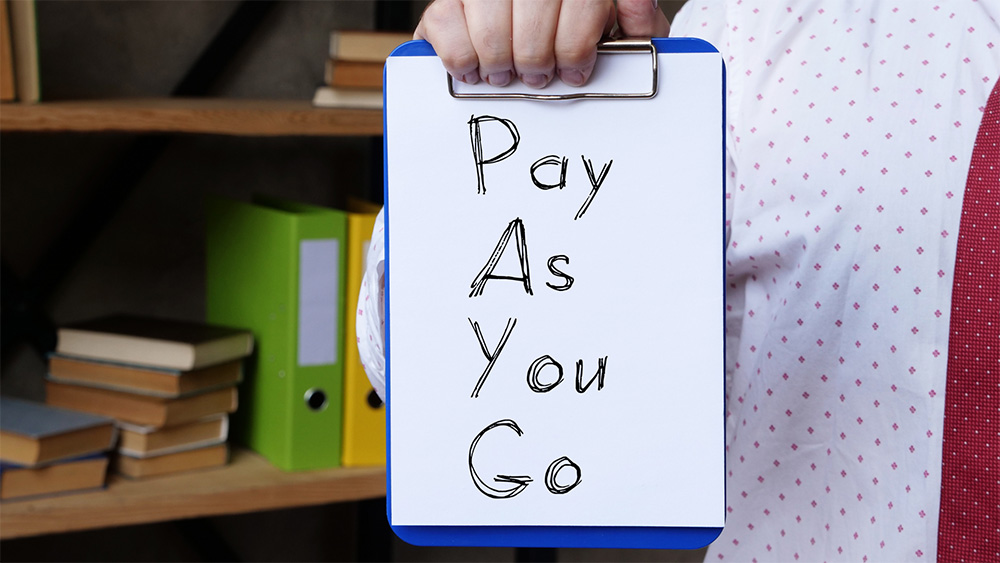PAYG Withholding and PAYG Instalment: What’s the Difference?

As a taxpayer, you might have heard of the term PAYG. But what is it exactly, and what does it mean for you? We'll answer that and more in this article.
What is PAYG?
PAYG stands for Pay-As-You-Go and is a way to pay your taxes as you earn your income instead of paying the entire amount at the end of the year. This way, you're always up-to-date with your tax payments, and you won't owe a big amount at the end of the year.
It is like a savings plan for taxes.
You put aside a little bit every time you get paid, so you're ready for tax time. It's a smart and convenient way to manage your taxes.
To get a better grasp of what PAYG is, let’s look at the two PAYG types and how it works.
Understanding PAYG withholding
PAYG withholding is a method employers use to pay taxes on behalf of their employees when they pay their income.
If you're an employee, PAYG withholding is a deduction from your salary that goes towards paying your taxes so that you don't face a large bill come tax return time.
On the other hand, if you're a business owner, PAYG withholding is an obligation that requires you to withhold taxes on behalf of your employees and submit them to the Australian Taxation Office (ATO) each quarter.
You might also need to withhold tax amounts from businesses that don't quote their Australian Business Number (ABN) to you and contractors who have a voluntary agreement with you.
In addition to salary and wages, you may need to withhold tax on payments such as:
- investment income to someone who does not provide their Tax File Number (TFN)
- dividends, interest, and royalties paid to non-residents of Australia
- payments to certain foreign residents for activities related to gaming, entertainment and sports, and construction
- payments to Australian residents working overseas
- super income streams and annuities
- payments made to beneficiaries of closely held trusts
Demystifying PAYG instalments
If you're self-employed or run your own business, you need to pay taxes on the money you make. One way to do this is with Pay-As-You-Go (PAYG) instalments, which you pay directly to the ATO.
Start by estimating how much you think you'll make in a year and how much tax you'll owe, then pay that amount in smaller pieces throughout the year.
When do you have to pay PAYG instalments?
You will automatically enter the PAYG instalments system if you have all of the following either as an individual (including a sole trader) or trust:
- instalment income from your latest tax return of $4,000 or more
- tax payable on your latest notice of assessment of $1,000 or more, and
- an estimated (notional) tax of $500 or more.
A company or super fund will also automatically enter the PAYG instalments system if any of the following apply:
- it has instalment income from its latest tax return of $2 million or more
- it has an estimated (notional) tax of $500 or more, or
- it is the head company of a consolidated group.
How does PAYG varying instalments work?
You can change the amount you pay with your Pay-As-You-Go (PAYG) instalments if you think you’re paying too much or too little tax. You need to do this before the payment due date, which is usually 28 days after the end of each quarter.
Whether you choose to vary your PAYG instalments or keep it the same throughout the year, it won't change how much you pay when you file your tax return at the end of the year. If you made excess tax payments, the ATO will issue you a refund. And if your PAYG instalments are insufficient, you will be asked to pay the remaining balance.
Varying PAYG instalments because of floods or other disasters
If you have been impacted by floods or other disasters in 2022, your PAYG instalment might vary. In the event that you can’t pay your quarterly instalment, you should contact the ATO and talk to them about setting up a payment plan, or have your accountant do this for you.
Wrap up
So there you have it. A brief overview of PAYG and how it works.
By understanding the basics, you can better manage your taxes so that you don't face any unpleasant surprises come tax season.
If you have any further questions about PAYG or if you need help lodging your tax returns, please feel free to contact us. We’re happy to help.
